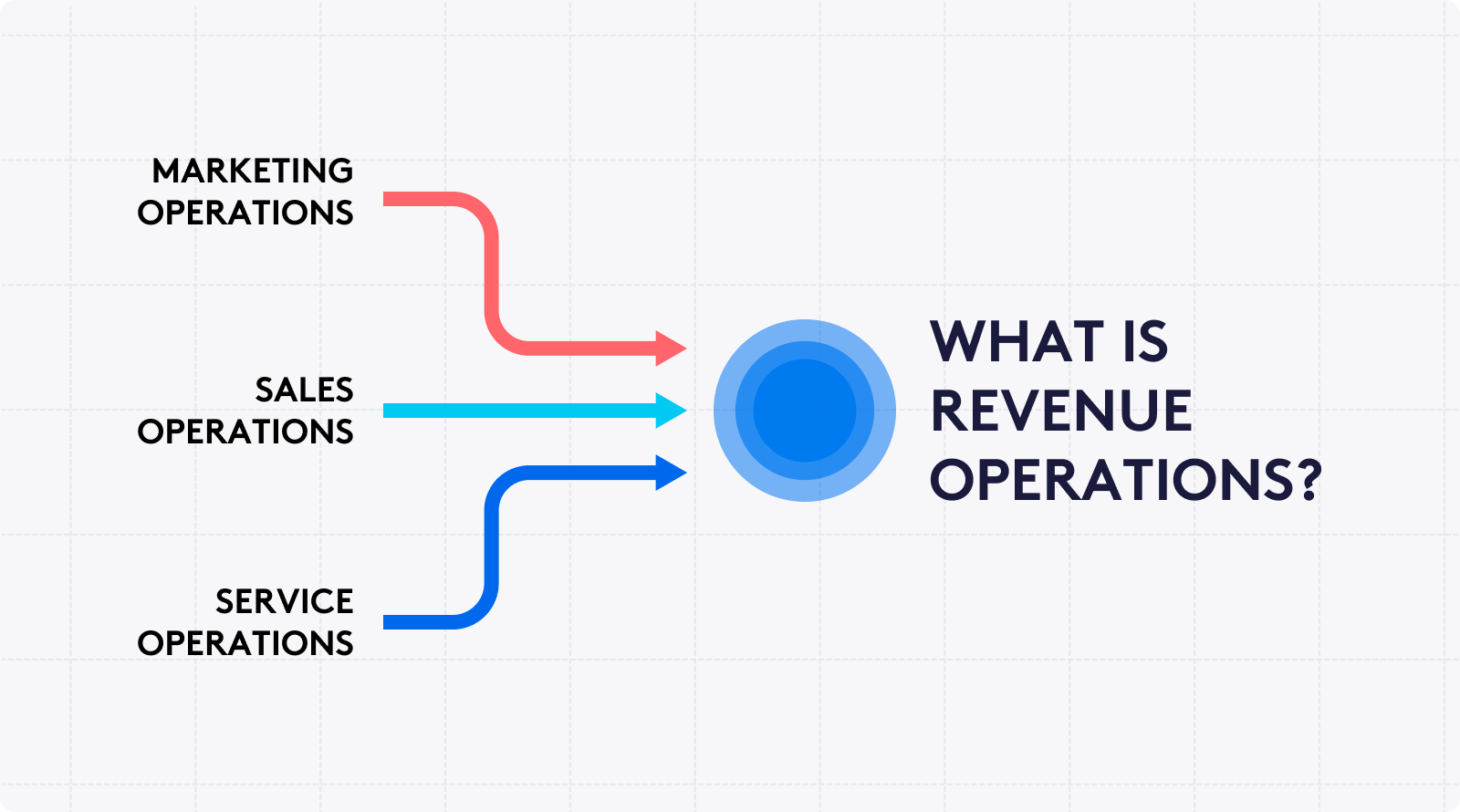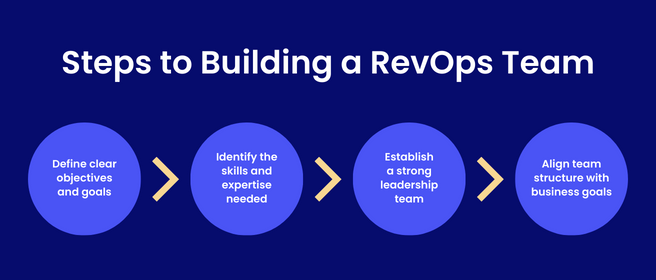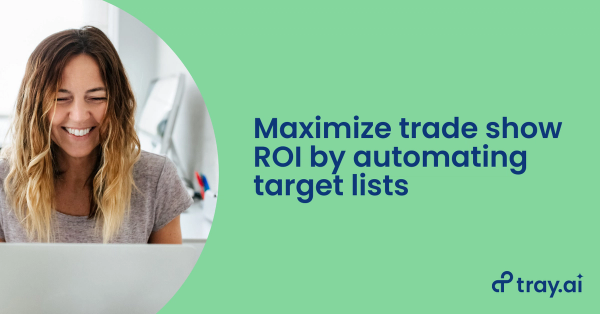Imagine having a team that not only helps your business meet but exceed customer expectations, while also keeping up with the breakneck pace of modern business. Now, imagine that by building this team, you can achieve up to 36% higher customer retention rates, 38% higher sales win rates, and reclaim up to 30% in lost revenue.
It’s called Revenue Operations (RevOps) and companies are now heavily investing in it as a means to improve customer acquisition and retention. With a staggering 77% of buyers expressing frustration at the complexity and difficulty of their last purchase, it's evident that a change in strategy is needed.
In this blog, we'll explore the essentials of building a RevOps team capable of delivering a streamlined, B2C-like experience to your customers, and highlight the critical role of low-code automation platforms in achieving RevOps triumph.
What makes a winning RevOps team?
In our Beginner’s Guide to Revenue Operations, we discussed how RevOps brings together people and processes across sales, marketing, and customer success in order to maximize revenue growth and predictability.

So it’s no surprise that your RevOps team will be comprised of experts within the following functional areas:
Marketing Operations: The people in your Marketing Ops (or MOPs) team are the frontline heroes, working hard to generate leads and drive brand awareness. They’re the ones creating, executing, and measuring marketing campaigns that attract and engage prospective customers.
Sales Operations: Your Sales Ops team is all about sales efficiency and effectiveness. They’re the ones managing sales processes and ensuring that your CRM is optimized to streamline the sales journey and, ultimately, win deals.
Customer Success Operations: Focused on retaining and expanding existing customer relationships, your Customer Success Ops (or CS Ops) team is on a mission to deliver a top-notch customer experience that fosters loyalty and long-term revenue growth. Their primary goal? To keep customers feeling valued and well-supported.
The goals and objectives across these three functions all boil down to the same thing: delivering an unbeatable customer experience that has a proven impact on revenue growth. Research conducted by Forrester indicates that B2B companies that excel at customer experience achieve 1.8 times more revenue growth compared to those that lag behind.
Steps to Building a High-Performing RevOps Team
Every organization is different, but there are steps you can take to build out a high-performing RevOps team no matter your growth stage. By taking the following steps, you can create a sturdy foundation for building an effective RevOps strategy.

Define clear objectives and goals: Start by establishing the main objectives for your RevOps team, narrowing in on areas such as customer acquisition, retention, and revenue growth. Once these are in place, you can more easily give your team direction and better prioritize their efforts.
Identify the skills and expertise needed: With your RevOps objectives defined, you need to determine the specific skills and expertise required to achieve them. Consider factors like data analysis, process management, and technical proficiency when selecting team members or hiring new talent.
Establish a strong leadership team: All teams need strong leaders. For your RevOps team, appoint a seasoned pro to oversee each component of your RevOps team (MOPs, Sales Ops, and CS Ops). These leaders should possess a deep understanding of their respective areas and be committed to driving success across the entire team.
Align team structure with business goals: RevOps is all about alignment. Organize your team in a manner that supports your overall business goals and promotes cross-functional collaboration. This means breaking down departmental silos and bridging gaps to foster a more unified approach to revenue growth.
Arm your RevOps team with the right technology
Remember: a team is only as good as its tools. Equipping your RevOps team with the right tech is the only way to maximize their potential. Low-code automation platforms like Tray play a pivotal role in enabling your team to redefine and optimize processes that impact revenue. Here’s how:
Power your RevOps engine with automation: By automating repetitive tasks and streamlining processes, low-code automation platforms let team members focus on higher-value activities that directly contribute to revenue growth, such as lead lifecycle management. For instance, DocuSign, the global leader in document-signing software, leverages low-code automation to accurately route tens of thousands of leads to their sales team. Here’s Kevin Cassidy, Director of Marketing Operations at DocuSign:
We operate at a massive scale; we have a large sales team and get ~80,000 leads per day across thousands of channels. Before implementing Tray, we were sending 90% of our leads to the sales team in under 10 minutes. After implementing Tray, we are sending 99% of our leads to the sales team in under 3 minutes!
Eliminate departmental silos: With low-code automation, RevOps teams can easily connect and flow data between multiple applications, resulting in better collaboration between departments. Leading engagement platform Outreach used low-code automation to integrate and automate processes across Slack, Salesforce, Marketo, Google Sheets, email, CSV files, data storage, MailLift, web forms, and G2Crowd, resulting in a much more connected – and productive – sales and marketing team.
Adapt to changing needs: If you’re investing in RevOps, your business is on the right path. But as you inevitably evolve and grow, you need your processes and systems to scale easily without requiring extensive manual intervention or additional resources. The best low-code automation platforms provide the flexibility RevOps teams need to remain agile and responsive to shifting market conditions and customer needs. That’s how a leading software analytics company was able to deliver hyper-personalized messaging to 100,000s of customers.
According to Gartner, by 2023, organizations using low-code development tools will be one-third more productive than those using traditional methods. By arming your RevOps team with low-code automation, you can create an environment where your team can thrive, collaborate effectively, and drive sustainable revenue growth for your organization.
How to structure your RevOps team
RevOps is a fairly new function and there’s even been some buzz around it as of late due to ‘Head of Revenue Operations” taking the #1 spot in LinkedIn’s “25 Fastest-Growing Job Titles in 2023”. That being said, there are a few different ways that organizations choose to structure their RevOps team, with some building out a clearly-defined RevOps department and others doing things a little more loosely. There’s no right or wrong way; only what’s right for your organization. But here are some best practices to follow to help you determine the best way to structure your team.
Centralized vs. decentralized teams: Determine whether a centralized or decentralized team structure best supports your business goals. Centralized teams definitely provide more consistency and alignment, while decentralized teams can offer greater flexibility and adaptability to specific market or regional needs.
Defining roles and responsibilities: Clearly outline the roles and responsibilities of each team member, so that everyone understands their part in driving revenue. This clarity helps to establish accountability and focus on strategic objectives.
Promoting cross-functional collaboration: It may be surprising to learn that one of the biggest barriers to setting up a RevOps team is company culture. That’s why it’s important to foster a culture of collaboration by encouraging regular communication and joint projects between different teams within your RevOps structure.
Continuous improvement and adaptability: In business, things can change rapidly. The most successful RevOps teams have a mindset of continuous improvement and adaptability. It’s critical to regularly assess team performance, identify areas for improvement, and make adjustments as needed to stay agile and responsive to changing business needs. With a commitment to growth and adaptability, your team can stay ahead of the curve and be ready to pounce on new opportunities.
How to measure RevOps success
Okay, so you’ve outlined your RevOps goals and you’ve got your dream team in place, now it’s time to see if your investment is actually boosting revenue. Here are a few ways to ensure your team delivers on its objectives.
Focus on the most important metrics: KPIs such as annual recurring revenue (ARR), average selling price (ASP), customer acquisition cost (CAC), and customer lifetime value (CLTV) are key to gauging your team's effectiveness in driving revenue. Not only do these metrics provide insight into the overall health of your RevOps efforts, but they also help you identify revenue processes that need tweaking, adjustments, or a complete overhaul.
Let data drive your decisions: You want the insights derived from those KPIs to inform your RevOps strategies. By syncing customer data with your low-code automation platform, you can achieve a 360-degree view of each customer, enabling you to make smarter, data-driven adjustments to your processes, campaigns, and initiatives to enhance their effectiveness and maximize return on investment.
Put your RevOps team to work with low-code automation
Building a strong RevOps team has become a top priority for organizations looking to maximize revenue, particularly in today’s world of tightening budgets, layoffs, and uncertain economic conditions. By lasering in on your marketing, sales, and customer success processes and redefining and optimizing them with a low-code automation platform, you can create a better customer experience marked by fast response times, personalized engagement, and quick ROI. And with the right structure, strategies, and tools in place, your RevOps team can help recapture significant revenue for your business – up to 30% annually. Ready to learn how?
It starts with fixing your leaky lead funnel. Check out this webinar to learn why that should be your RevOps team’s first project.




